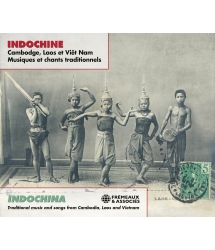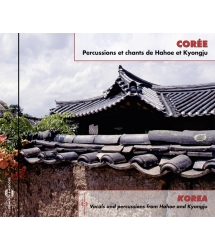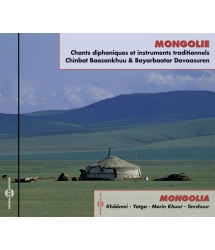- Our Catalog
- Philosophy
- Philosophers of the 20th century and today
- History of Philosophy (PUF)
- Counter-History and Brief Encyclopedia by Michel Onfray
- The philosophical work explained by Luc Ferry
- Ancient thought
- Thinkers of yesterday as seen by the philosophers of today
- Historical philosophical texts interpreted by great actors
- History
- Books (in French)
- Social science
- Historical words
- Audiobooks & Literature
- Our Catalog
- Jazz
- Blues
- Rock - Country - Cajun
- French song
- World music
- Africa
- France
- Québec / Canada
- Hawaï
- West Indies
- Caribbean
- Cuba & Afro-cubain
- Mexico
- South America
- Tango
- Brazil
- Tzigane / Gypsy
- Fado / Portugal
- Flamenco / Spain
- Yiddish / Israel
- China
- Tibet / Nepal
- Asia
- Indian Ocean / Madagascar
- Japan
- Indonesia
- Oceania
- India
- Bangladesh
- USSR / Communist songs
- World music / Miscellaneous
- Classical music
- Composers - Movie Soundtracks
- Sounds of nature
- Our Catalog
- Youth
- Philosophy
- News
- How to order ?
- Receive the catalog
- Manifesto
- Dictionnary











- Our Catalog
- Philosophy
- Philosophers of the 20th century and today
- History of Philosophy (PUF)
- Counter-History and Brief Encyclopedia by Michel Onfray
- The philosophical work explained by Luc Ferry
- Ancient thought
- Thinkers of yesterday as seen by the philosophers of today
- Historical philosophical texts interpreted by great actors
- History
- Books (in French)
- Social science
- Historical words
- Audiobooks & Literature
- Our Catalog
- Jazz
- Blues
- Rock - Country - Cajun
- French song
- World music
- Africa
- France
- Québec / Canada
- Hawaï
- West Indies
- Caribbean
- Cuba & Afro-cubain
- Mexico
- South America
- Tango
- Brazil
- Tzigane / Gypsy
- Fado / Portugal
- Flamenco / Spain
- Yiddish / Israel
- China
- Tibet / Nepal
- Asia
- Indian Ocean / Madagascar
- Japan
- Indonesia
- Oceania
- India
- Bangladesh
- USSR / Communist songs
- World music / Miscellaneous
- Classical music
- Composers - Movie Soundtracks
- Sounds of nature
- Our Catalog
- Youth
- Philosophy
- News
- How to order ?
- Receive the catalog
- Manifesto
- Dictionnary
Thaïland 1989-1998
Ref.: FA5837
EAN : 3561302583723
Artistic Direction : François Jouffa et Susie Jung-hee Jouffa
Label : FREMEAUX & ASSOCIES
Total duration of the pack : 1 hours 16 minutes
Nbre. CD : 1
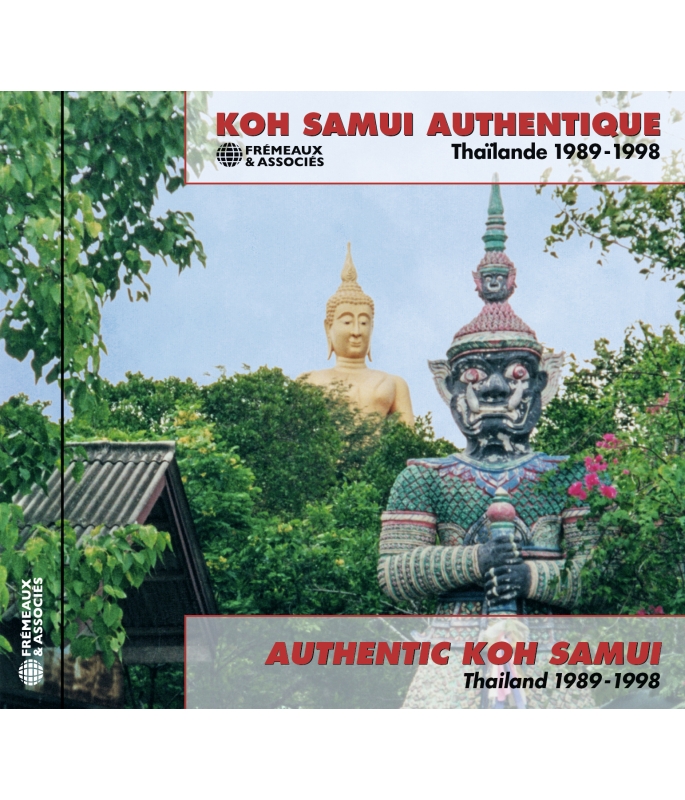
Thaïland 1989-1998
These recordings, taped in situ between 1989 and 1998 by François Jouffa and Susie Jung-hee Jouffa, on the island of Koh Samui, the pearl of the Gulf of Siam, allow us to listen to the authentic music of this heavenly place before the tourist rush initiated in the early 2000s. It reveals an incredible array of instruments, folk bands and traditional musics (like the one that accompanies the battles of Muay Thai), all of which forged the musical soul of this island for centuries but it has now been replaced by nightclubs and disco attractions.
Patrick FRÉMEAUX
1. Pathom Dusit. 5’18
2. Krailart Samreung. 3’55
3. Khaek Borathet. 4’39
4. Khaek Toi Mau. 4’30
5. Lao Duang Deuan. 4’26
6. Khang Kao Khab Kluai. 1’39
12. Sonrum. 5’54
13. Bhungruh. 1’52
14. Yaisatanti. 3’52
15. Adid. 2’20
16. Instrumental. 1’21
17. Chom Koh Samui. 5’29
18. Samui Music. 3’53
19. Paichum Numthuk. 6’00
20. Sarama. 7’54
RÉALISATION FRANÇOIS JOUFFA ET SUSIE JUNG-HEE JOUFFA
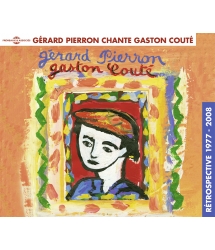
GÉRARD PIERRON
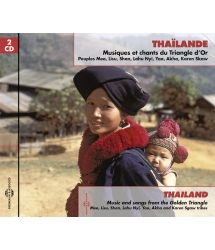
PEUPLES MEO, LISU, SHAN, LAHU NYI, YAO, AKHA, KAREN...
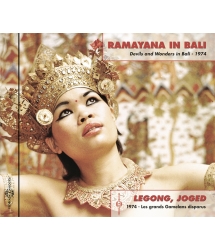
DEVILS AND WONDERS IN BALI
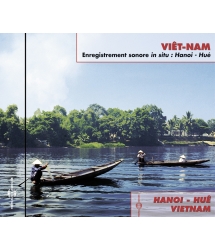
VIET-NAM MUSIQUES ET CHANTS POPULAIRES DE HANOI -...




-
PisteTitleMain artistAutorDurationRegistered in
-
1Pathom DusitEkkachai GroupTraditionnel00:05:181991
-
2Krailart SamreungEkkachai GroupTraditionnel00:03:551991
-
3Khaek BorathetEkkachai GroupTraditionnel00:04:391991
-
4Khaek Toi MauEkkachai GroupTraditionnel00:04:301991
-
5Lao Duang DeuanEkkachai GroupTraditionnel00:04:261991
-
6Khang Kao Khab KluaiEkkachai GroupTraditionnel00:01:391991
-
7Humrong YanaOrchestre de Prateeb ChaijamjunTraditionnel00:04:341991
-
8LaoscharensriOrchestre de Prateeb ChaijamjunTraditionnel00:02:241991
-
9PhagubphuOrchestre de Prateeb ChaijamjunTraditionnel00:01:531991
-
10KhupmaibundongOrchestre de Prateeb ChaijamjunTraditionnel00:03:091991
-
11GhuirungOrchestre de Prateeb ChaijamjunTraditionnel00:01:381991
-
12SonrumOrchestre de Thawon TongmangTraditionnel00:05:541989
-
13BhungruhOrchestre de Thawon TongmangTraditionnel00:01:521989
-
14YaisatantiOrchestre de Thawon TongmangTraditionnel00:03:521989
-
15AdidOrchestre de Thawon TongmangTraditionnel00:02:201989
-
16InstrumentalOrchestre de Thawon TongmangTraditionnel00:01:211989
-
17Chom Koh SamuiOrchestre de Thawon TongmangTraditionnel00:05:291989
-
18Samui MusicOrchestre de Thawon TongmangTraditionnel00:03:531989
-
19Paichum NumthukOrchestre de Thawon TongmangTraditionnel00:06:001989
-
20SaramaFoule au Chaweng StadiumTraditionnel00:07:541998
KOH SAMUI AUTHENTIQUE - Thaïlande 1989-1998
AUTHENTIC KOH SAMUI - Thailand 1989-1998
Réalisation François Jouffa et Susie Jung-hee Jouffa
Ces enregistrements in situ ont été réalisés, entre 1989 et 1998 par François Jouffa et Susie Jung-hee Jouffa, sur Koh Samui, la perle du golfe de Thaïlande. Ils donnent à entendre la musique authentique de l’île paradisiaque, celle d’avant la ruée touristique initiée au début des années 2000. On y retrouve un panel inouï d’instruments, groupes folkloriques et musiques traditionnelles (comme celle qui accompagne les combats de Muay Thai), qui ont fait l’âme musicale de l’île pendant des siècles, aujourd’hui remplacée par la musique des discothèques et les attractions occidentales. Patrick Frémeaux
These recordings, taped in situ between 1989 and 1998 by François Jouffa and Susie Jung-hee Jouffa, on the island of Koh Samui, the pearl of the Gulf of Siam, allow us to listen to the authentic music of this heavenly place before the tourist rush initiated in the early 2000s. It reveals an incredible array of instruments, folk bands and traditional musics (like the one that accompanies the battles of Muay Thai), all of which forged the musical soul of this island for centuries but it has now been replaced by nightclubs and disco attractions. Patrick Frémeaux
Editeur des patrimoines sonores naturels :
paysages sonores des écosystèmes menacés
du monde, chants des oiseaux, voix de la faune sauvage, et musiques traditionnelles.
Publisher of natural sound heritages
and traditional music for relaxing
and scientific listening :
natural sound sceneries of endangered
ecosystems in the world, wilderness atmospheres, bird songs, voices of the wildlife.
KOH SAMUI AUTHENTIQUE (Thaïlande) 1989-1998.
Production-réalisation : Susie Jung-hee Jouffa et François Jouffa
Nous avons réalisé ces enregistrements, in situ, en 1989, 1991 et 1998 à Koh Samui, dans une des îles du Golfe de Thaïlande que notre ami l’auteur Alec Goldsmith, néozélandais d’origine polonaise, qualifiait de Paradise dans ses écrits d’avant la ruée touristique (le pays recevra 40 millions de touristes en fin des années 2010) qui bouleversa les valeurs culturelles d’une nation auparavant jamais conquise de toute son histoire. L’écrivain-voyageur y avait vécu plusieurs mois par an jusqu’à devenir presque centenaire avant de rejoindre Kerouac, Moïse et Bouddha. Il s’agissait d’un temps que les moins de 60 ans ne peuvent pas connaître, pour paraphraser une célèbre chanson française de Charles Aznavour. Un temps où il n’y avait qu’un seul restaurant à Chaweng Beach contre des centaines aujourd’hui, et quand les rares jeunes Occidentaux, backpackers ou non, pouvaient dormir sur les plages pour une petite poignée de baths dans des huttes en bambous tressés. Samui était on the road de «la petite fumée de l’herbe du diable» et des magic mushrooms, celle qui allait de San Francisco à Katmandou en passant par Ibiza, Marrakech ou Goa. Occupée par des pêcheurs depuis 1500 ans, l’île sauvage était devenue un verger de bananes, papayes, ramboutans et autres mangues mais, surtout, une jungle de palmiers et cocotiers qui fournissaient à la capitale Bangkok deux millions de noix de coco par mois, principalement décrochées des arbres par des singes macaques apprivoisés.
Ces traces des derniers authentiques instruments traditionnels de l’île, complètement disparus au profit des sonorisations techno-électro dans les discothèques, bars, restaurants, boutiques, y compris sur les plages, nous les avions fixées dans la quiétude de la forêt vierge, vers Bophut, maintenant l’emplacement d’une piste d’un bruyant karting et d’un stand de tirs assourdissant. Conscients de préserver un pan du patrimoine musical mondial en train de disparaître, nous avions gravé ces documents sonores avec un matériel ancien historique capable de restituer la rondeur et la chaleur d’antan : bandes magnétique Agfa PER528 et Basf, deux micros Sennheiser 416T pour un magnétophone Nagra IVS. Merci au groupe Frémeaux Colombini d’avoir apprécié notre travail. F. J.
Durée totale du CD : 76 minutes, 47 secondes.
I - EKKACHAI GROUP
Enregistrement de cet orchestre de Piphat (musique d’origine royale), le 4 janvier 1991. Six morceaux. Six musiciens originaires de Nakhon Si Thammarat :
- M. Ekkachai Kimchiang, chef du groupe, devant son xylophone Ranat Ek de 22 touches en bois.
-
M. Sarood Tongmefquan qui joue du carillon Khong Wong Lek, avec 16 petites cymbales assemblées en cercle autour de l’artiste.
- M. Teerasut Satirawanid avec ses deux tambours Klong Khaek disposés horizontalement sur ses genoux.
- M. Khanchai Homjan rythme le temps avec sa paire de cymbalettes épaisse Ching en bronze.
- M. Sumat Mit Plong et ses petites cymbales plates Chap Lek.
- M. Prachanart Surkrat frappe ses briquettes de bambou Krap Sepha.
1. Pathom Dusit. 5’18”
Ouverture.
2. Krailart Samreung. 3’55”
Les dieux dans les nuages participent à une fête amusante.
3. Khaek Borathet. 4’39”
Le bonheur est dans le travail.
4. Khaek Toi Mau. 4’30”
Préparer la chambre pour une lune de miel.
5. Lao Duang Deuan. 4’26”
Un couple d’amoureux se sépare à cause de la famille de la femme qui reproche à l’homme d’habiter trop loin.
6. Khang Kao Khab Kluai. 1’39”
Amusante scène érotique d’une chauve-souris qui mange une banane.
II – ANGKLUNG
Les musiques traditionnelles, folkloriques, classiques ou populaires reflètent la situation géographique du Siam entre la Chine et l’Inde, avec les influences des routes du commerce qui comprenaient l’Afrique, la Grèce et Rome. Les instruments Klong Thap et Khim sont d’origine perse, le Chakhe d’Inde, le Klong Nin de Chine, etc. Ici, l’Angklung provient du royaume de Sunda en Indonésie, au VIIème siècle, et était joué en l’honneur de la déesse hindou de la fertilité Dewi Sri. En 2010, l’UNESCO a reconnu officiellement cet instrument comme « Masterpiece of the oral and intangible heritage of humanity ». Pour jouer ce Mai Pai (« Musique de bambou »), l’Angklung, est un assemblage encadré de plusieurs tubes de bambou de tailles et donc de notes différentes que l’on secoue au sein d’un ensemble.
L’enregistrement a eu lieu en plein air, le soir pour que le son percute le ciel étoilé et rebondisse, le
13 janvier 1991, dans le jardin du Wat Chang, temple de la lumière, à Naton. Le professeur Prateeb Chaijamjun dirige dix jeunes virtuoses, dans cinq morceaux, tout en jouant du tambour Klong Yao (originaire du Laos). Son orchestre est constitué de deux jeunes garçons : Tririt Pusiriwat (14 ans. Il joue les notes do et ré) et Pitak Chajamjun (12 ans. Do, sol et fa). Et de huit jeunes filles : Niramon Sangsri
(12 ans. Sol et la), Kanita Bandit Chart (15 ans. Sol et la), Sukjai Noppakun (13 ans. Do, mi et si), Jantima Taptong (13 ans. Mi et ré), Sunisa Boursamui (12 ans. Mi et do), Pakamast Medest (15 ans. Sol et la), Amonrut Sriphel
(15 ans. Sol et la) et Souvanee Promkoh (15 ans. Do et mi).
7. Humrong Yana. 4’34”
L’introduction des danses thaïes.
8. Laoscharensri. 2’24”
Les deux jolies filles du roi.
9. Phagubphu. 1’53”
Histoire familiale avec une tante qui garde les enfants après le départ de l’oncle.
10. Khupmaibundong. 3’09”
Une belle jeune fille au cœur brisé.
11. Ghuirung. 1’38”
Le beau lever du soleil qui annonce une bonne journée.
III - CHAWENG GROUP
Enregistrement de cet orchestre de musique Mahori (musique royale de divertissement) en décembre 1989.
Huit morceaux. Quatre musiciens et deux chanteuses, tous originaires de Chaweng :
- M. Thawon Tongmang, chef du groupe, frappe deux petits tambours Klong Chatri avec deux baguettes.
- M. Sawit Plumkong frappe deux autres petits tambours Klong Thap au son proche du tabla indien.
- M. Ling Segong passe de petites cymbales Ching à deux gongs verticaux Mong Khong.
- M. Cham Rattanaruk souffle dans un hautbois Pi Nai à la sonorité nasillarde proche du Shehnai indien.
- Mme Chalemp Kaopai Boon, chanteuse.
- Mlle Nittaya Akasa, chanteuse.
12. Sonrum. 5’54”
Le maître explique à une élève danseuse comment déplacer harmonieusement les doigts de ses mains et de ses pieds
13. Bhungruh. 1’52”
Instrumental d’introduction.
14. Yaisatanti. 3’52”
Un jeune homme espère que sa cousine, qui revient de la ville, acceptera de danser avec lui à la fête du village.
15. Adid. 2’20”
L’ancien chef d’orchestre est mort (histoire vécue par cette troupe) et il faut s’entraîner pour que le groupe conserve son prestige.
16. Instrumental. 1’21”
17. Chom Koh Samui. 5’29”
Réflexion sur les changements intervenus dans la nature depuis l’arrivée des touristes étrangers (les Farangs).
18. Samui Music. 3’53”
Musique populaire de Samui.
19. Paichum Numthuk. 6’00
Ce chant narre la vision de la communauté devant l’attitude des étrangers, notamment celle des femmes qui se baignent avec les seins nus dans la mer.
IV - SARAMA, MUSIQUE DE MUAY THAI
La boxe thaïe ou Muay Thai est un art martial qui remonte au XIIIème siècle, du temps du royaume de Sukhôtai, quand il fallait affronter l’envahisseur birman. Dans cet art des neuf armes (les poings, les coudes, les genoux, les tibias et la tête -cette dernière étant maintenant interdite), plusieurs rituels et cérémonials se sont perpétués, comme la danse Ram-Muay. Le style de la musique traditionnelle qui accompagne les boxeurs, avant et pendant le combat, s’appelle Sarama. Au bord du ring, quatre musiciens, soit un ensemble Pi Chawa Klong Khaek composé de deux tambours Klong Khaek, mâle et femelle, d’une paire de petites cymbales Ching, mais surtout d’un hautbois Pi Chawa dont le joueur pousse la sonorité nasale jusqu’à la transe en improvisant selon l’intensité du combat. Dans une forme de free jazz-blues asiatique, on peut reconnaître des citations d’airs populaires. Parfois, on ne sait pas si c’est la musique qui suit les mouvements gracieux et violents des corps ou si ce sont les sportifs qui sont motivés par le tempo obsessionnel donné par l’orchestre. Pour des raisons économiques, cette tradition musicale se meurt, les musiciens en live étant remplacés par de la musique enregistrée qui, bien sûr, ne peut ni anticiper, ni encourager, ni suivre les mouvements du combat.
20. Sarama. 7’54”.
Témoignage d’une époque révolue, nous vous proposons un montage sonore d’un match au Chaweng Stadium, le vendredi 7 août 1998, quand Petch-Samut avait triomphé aux points, à la fin du cinquième et dernier round (trois minutes par round), de son coriace adversaire Nang-Nuan (118 Lbs chacun). Présentations, préliminaires, échauffement, extraits du combat avec les rounds 2 et 5, les cris des paris entre Thaïs, et surtout la musique d’accompagnement qui n’existe plus, de nos jours, lors de ces fights de Koh Samui. Ambiance !
Enregistré in situ à Koh Samui, Surat Thani, Thaïlande, en 1989, 1991 et 1998.
Production-réalisation, prises de son : Susie Jung-hee Jouffa et François Jouffa.
Magnétophone Nagra IVS, deux micros Sennheiser 416T. Bandes magnétique Agfa PER528
(pour le Muay Thai : bandes Basf).
Recherches, textes, liner notes en version anglaise : Susie Jung-hee Jouffa.
Photos : Sylvie Jouffa (Nikon Nikkormat EL, argentique).
Montage et premastering : Christophe Hénault, Studio Art et Son, Annecy, 2022.
Éditorialisation : Augustin Bondoux pour le Groupe Frémeaux Colombini, 2023.
Des jolies musiciennes du royaume de Dvâravatî (VIIème-VIIIème siècle). Musée national de Bangkok. Photo Susie Jung-hee Jouffa (sur iPhone) au Musée Guimet en juin 2009, exposition Dvâravatî.
Ces musiciennes portent le costume de femmes du royaume de Dvâravatî. Elles ont des écharpes sur leur épaule droite, une sorte de jupe sarong, de gros anneaux aux oreilles et une coiffure en chignon. La chanteuse est à gauche. A côté d’elle, on ne sait pas le rôle du personnage. La troisième joue d’un luth à 5 cordes Pipa. La quatrième joue des petites cymbales. La cinquième joue de la Vina en forme de tube qui a une caisse de résonnance formée par une calebasse, instrument à cordes originaires de l’Inde.
AUTHENTIC KOH SAMUI (Thailand). 1989-1998.
Production, recordings: Susie Jung-hee Jouffa and François Jouffa.
We realized these recordings in situ, in 1989, 1991 and 1998 in Koh Samui, one of the islands of the Gulf of Thailand that our friend, the author Alec Goldsmith, a New Zealander of Polish origin, called “Paradise” in his writings before the tourist rush (the country received 40 millions tourists at the end of the years 2010) which upset the cultural values of a nation never conquered before in all its history. The travel writer had lived there several months a year until becoming almost a hundred years old before joining Kerouac, Moses and Buddha. It was a time that the under-60s could not know, to paraphrase a famous French song by Charles Aznavour. A time when there was only one restaurant in Chaweng Beach whereas they are hundreds nowadays, a time when the few young Westerners, backpackers or not, could sleep on the beaches in woven braided bamboo huts, for a small handful of baths, the local currency. Samui was “on the road” of “the little smoke of the devil’s grass” and magic mushrooms, the one that went from San Francisco to Kathmandu via Ibiza, Marrakech or Goa. Occupied by fishermen for 1500 years, the wild island had become an orchard of bananas, papayas, rambutans and other mangoes and, above all, a jungle of palm and coconut trees that used to supply the capital, Bangkok, with two millions coconuts per month, mostly taken down by tamed monkeys.
These traces of the last authentic traditional instruments of the island, that have completely disappeared in favor of techno-electro sonorisations in discos, bars, restaurants and shops, even on beaches, we had recorded them in the tranquillity of the rainforest, nearby Bophut, where there is now a noisy go-kart track and a deafening shooting range.
Aware of preserving a part of the world’s musical heritage that was disappearing, we had engraved these sound documents with an old historical equipment capable of restoring the roundness and warmth of yesteryear: Agfa PER528 and Basf magnetic tapes, two Sennheiser 416T microphones used with a Nagra IVS tape recorder. Thank you to the group Frémeaux Colombini for having appreciated our work. F. J.
Total CD time : 76 minutes, 47 seconds.
I - EKKACHAI GROUP
Recording of this Piphat orchestra (music of royal origin), January 4th, 1991. Six pieces of music. Six musicians from Nakhon Si Thammarat :
-
Mr. Ekkachai Kimchiang, head of the group, in front of his xylophone Ranat Ek with 22 wooden keys.
-
Mr. Sarood Tongmefquan playing the Khong Wong Lek carillon, with 16 small cymbals gathered in a circle around the artist.
-
Mr. Teerasut Satirawanid with his two Klong Khaek drums layed down horizontally on his lap.
-
Mr. Khanchai Homjan giving rhythm with his pair of thick bronze Ching cymbals.
- Mr. Sumat Mit Plong and his small flat cymbals Chap Lek.
- Mr. Prachanart Surkrat hiting his small Krap Sepha bamboo bricks.
1. Pathom Dusit. 5’18”
Opening.
2. Krailart Samreung. 3’55”
The gods in the clouds participate in a fun party.
3. Khaek Borathet. 4’39”
Happiness is in work.
4. Khaek Toi Mau. 4’30”
Preparing the room for a honeymoon.
5. Lao Duang Deuan. 4’26”
A couple of lovers split up because of the woman’s family who blames the man for living too far away.
6. Khang Kao Khab Kluai. 1’39”
Funny erotic scene of a bat eating a banana.
II - ANGKLUNG
Traditional, folk, classical and popular music reflect the geographical location of Siam between China and India, with influences from trade routes that included Africa, Greece and Rome. Klong Thap and Khim instruments are of Persian origin, the Chakhe comes from India, the Klong Nin from China, etc. Here, the Angklung instrument dates back from the kingdom of Sunda in Indonesia, in the 7th century, and was played in honor of the Hindu fertility goddess Devi Shri. In 2010, UNESCO officially recognized this instrument as “Masterpiece of the oral and intangible heritage of humanity”. To play the Mai Pai (“Bamboo Music”), the Angklung is a framed construction of several bamboo tubes of different sizes thus producing different notes when one shakes it.
The recording took place in the open air, in the evening so that the sound hit the starry sky and bounced, on January 13, 1991, in the garden of the Wat Chang, temple of light, in Naton. Professor Prateeb Chaijamjun directs ten young virtuosos, in five pieces, while playing himself the Klong Yao drum (Lao origin). His orchestra consists of two young boys: Tririt Pusiriwat (14 years old. Plays C and D notes) and Pitak Chajamjun (12 years old. C, G and F). And eight young ladies: Niramon Sangsri (12 years old. G and A), Kanita Bandit Chart (15 years old. G and A), Sukjai Noppakun (13 years old. Do, E and B), Jantima Taptong (13 years old. E and D), Sunisa Boursamui (12 years old. E and C), Pakamast Medest (15 years old. G and A), Amonrut Sriphel (15 years old. G and A) and Souvanee Promkoh (15 years old. C and E).
7. Humrong Yana. 4’34”
The introduction of Thai dances.
8. Laoscharensri. 2’24”
The two pretty daughters of the King.
9. Phagubphu. 1’53”
Family history with an aunt who takes care of the children after the uncle has left.
10. Khupmaibundong. 3’09”
A beautiful girl with a broken heart.
11. Ghuirung. 1’38
The beautiful sunrise that heralds a good day.
III - CHAWENG GROUP
Recording of this orchestra of Mahori music (royal entertainment music) in December 1989. Eight pieces. Four musicians and two singers, all from Chaweng:
- Mr. Thawon Tongmang, leader of the group, strikes two small Klong Chatri drums with two drumsticks.
- Mr. Sawit Plumkong strikes two other small Klong Thap drums, close to the Indian tabla sound.
- Mr. Ling Segong moves from small Ching cymbals to two vertical Mong Khong gongs.
- Mr. Cham Rattanaruk blows in a Pi Nai oboe with a nasillard sound close to the Indian Shehnai.
- Mrs. Chalemp Kaopai Boon, singer.
- Miss Nittaya Akasa, singer.
12. Sonrum. 5’54”
The dance master teaches a female student how to harmoniously move the fingers of her hands and feet.
13. Bhungruh. 1’52”
Instrumental introduction.
14. Yaisatanti. 3’52”
A young man hopes that her cousin, who has just returned from the city, will agree to dance with him at the village festival.
15. Adid. 2’20”
The former conductor is dead (history experienced by the band) and it is necessary to train to regain the prestige of the group.
16. Instrumental. 1’21”
17. Chom Koh Samui. 5’29”
Thoughts on the changes in nature due to the arrival of foreign tourists (called Farangs).
18. Samui popular music. 3’53”
19. Paichum Numthuk. 6’00
The song reveals the vision of the local community on the attitude of foreigners, especially that of women who bathe topless in the sea.
IV - SARAMA, MUAY THAI MUSIC
Thai boxing or Muay Thai is a martial art that dates back to the thirteenth century, from the time of the Sukhôtai kingdom, when it was necessary to confront the Burmese invader. In this art of nine weapons (fists, elbows, knees, shins and head -the latter being now forbidden), several rituals and ceremonials have survived, such as the Ram-Muay dance. The style of traditional music that accompanies boxers, before and during combat, is called Sarama. Seated at ringside, four musicians, that is to say a set Pi Chawa Klong Khaek composed of two Klong Khaek drums, male and female, of a pair of small Ching cymbals, and most of all, a Pi Chawa oboe whose player pushes the nasal sound to trance by improvising according to the intensity of the fight. In a form of Asian free jazz-blues, one can recognize quotations from popular tunes. Sometimes, it is hard to say whether it is the music that follows the graceful and violent movements of the muscular bodies or if it is the athletes who are motivated by the obsessive tempo given by the orchestra. For economic reasons, this live musical tradition is dying, the musicians being replaced by recorded music which, of course, can neither anticipate nor follow the movements of the fight.
20. Sarama. 7’54”
Testimony of a bygone era, we offer you the sound editing of a match at the Chaweng Stadium, on August 7th, 1998, when Petch-Samut had triumphed over his tough opponent, Nang-Nuan (118 Lbs each), at the end of the fifth and last round (three minutes per round). Preliminary presentations, warm-up, excerpts from the fight, rounds 2 and 5, screaming coming from the bets between Thai audience, and the accompanying music that no longer exists, nowadays, during the fights in Koh Samui. Atmosphere!
